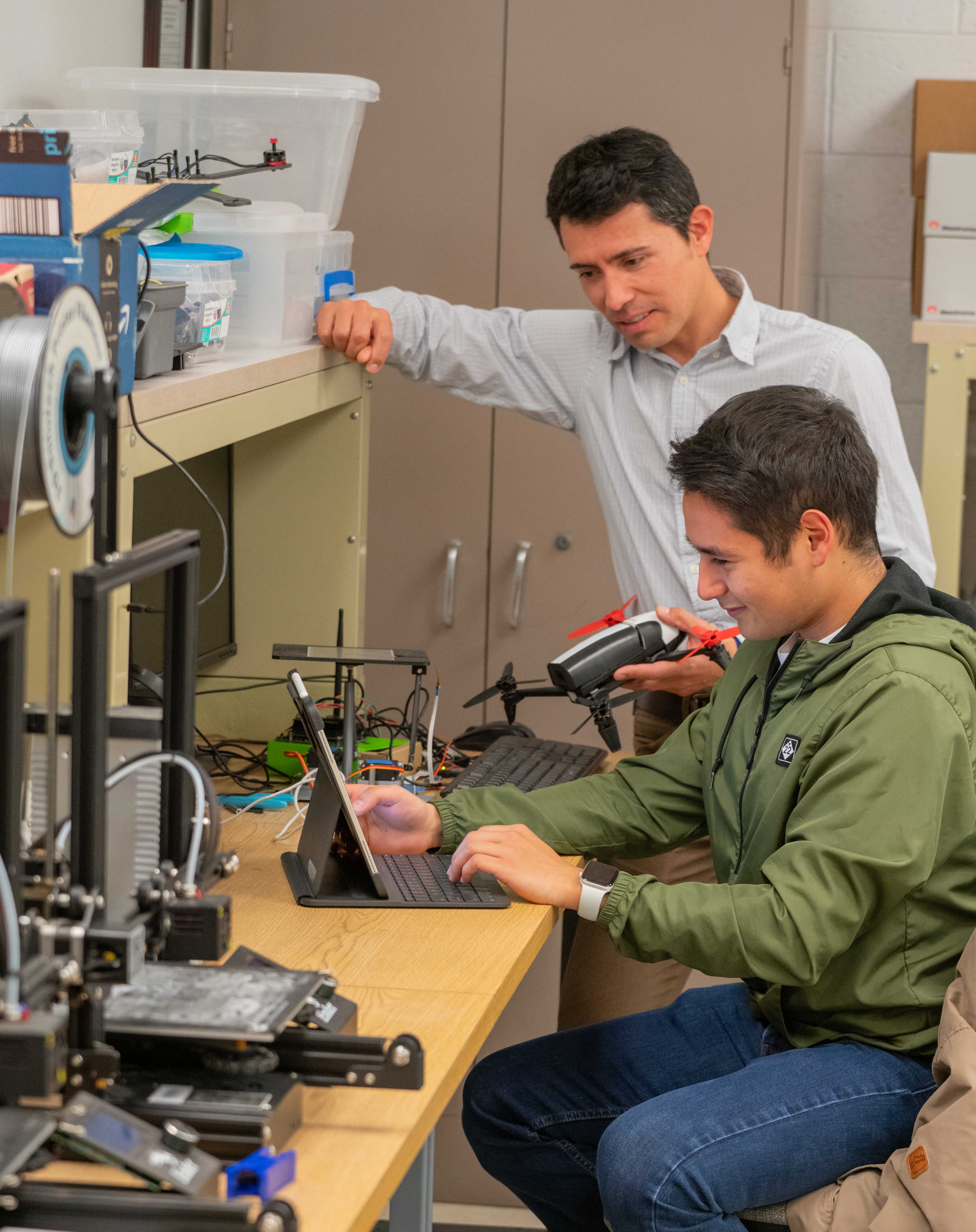
In his laboratory at New Mexico State University, Klipsch School of Electrical and Computer Engineering Assistant Professor Luis Rodolfo Garcia Carrillo is using neuromorphic computing research to advance the future of autonomous systems such as drones, satellites and robots. A new algorithmic approach that mimics how the human brain relates to the world to provide capabilities closer to human reasoning, neuromorphic computing research can provide low-power solutions to computational problems. Currently, Garcia Carrillo is working to develop a comprehensive robotic test-bed to support real-time experimental validation of state estimation and control techniques for single and multi-agent robotic systems. “My research is devoted to the development of a new class of solutions which depart from conventional approaches,” Garcia Carrillo said. “The goal is to create an end-to-end neuromorphic architecture for perception, state estimation and control of autonomous robotic systems.” Garcia Carrillo emphasized a module with advanced estimation and control capability is a significant component of any future autonomous, cognitive computational robotic platform. “In order to advance the state-of-the-art in real-time autonomous robots, we need to simultaneously consider the theoretical challenges and the limitations of the practical machinery behind these systems.” For a real-time system, sensor signal quality and the performance of perception, state estimation and control algorithms are only going to be as fast and good as the hardware used, Garcia Carrillo added. “My goal is to develop a set of neuromorphic vision computing algorithms that provide relevant state information for robot control,” he said. “The development of a brain-inspired neuromorphic control with self-adaptation capabilities can make fundamental breakthroughs in achieving intelligent and flexible real-time decision making,” Garcia Carrillo said. “Various domains in our everyday lives can benefit from this research study, including but not limited to intelligent and autonomous transportation systems, surveillance, power networks, and information systems. These advancements can directly impact the economy and security of the nation.” Garcia Carrillo said the success to creating this new generation of advanced autonomous systems will increase with collaborations in complementary fields such as electrical engineering, mechanical and aerospace engineering, computer science, and neuroscience. He invites students from the various areas to visit his laboratory and to collaborate and contribute in the research projects. In addition to his research projects, Garcia Carrillo recently published an article with Los Alamos National Laboratory researchers on neuromorphic computing. Garcia Carrillo and Andrew T. Sornborger from the LANL Department of Information Sciences wrote “A neuromorphic control architecture inspired by the limbic system,” which appeared in the 60th Institute of Electrical and Electronics Engineers (IEEE) Conference on Decision and Control, the most prominent control systems conference in the world, held in Austin, Texas, in December 2021.